- Call us: 01444 237070
- Contact Us
- Stores
- Sign In / Register
-
- Back
- Used Cameras
- Used Accessories
- Used Lenses
- Used Video
- Used Film Equipment
- Used Stock Alert
- Used Blank Test
- Sell or Part Exchange
- Used Clearance
- Recently Added Used Equipment
- Park Picks
- All Used Black Friday Deals
- Faulty
- Trade-In
- Blog
- New in
- Call us
- Contact us
- Stores
- Sign in
- Categories
- Tips & Inspiration
- Reviews
- News
- Events
- Features
- Buying Guides
- Competitions
H&Y RevoRing Polarising Filter Review
If you’re interested in capturing landscapes, cityscapes or architecture you may have come across a polarising filter, CPL or circular polariser, which are all the exact same lens filter under different names. The RevoRing MRC CPL Filter from H&Y is one such polarising filter, which has garnered plenty attention thanks to a unique, cost and time saving magnetic design.
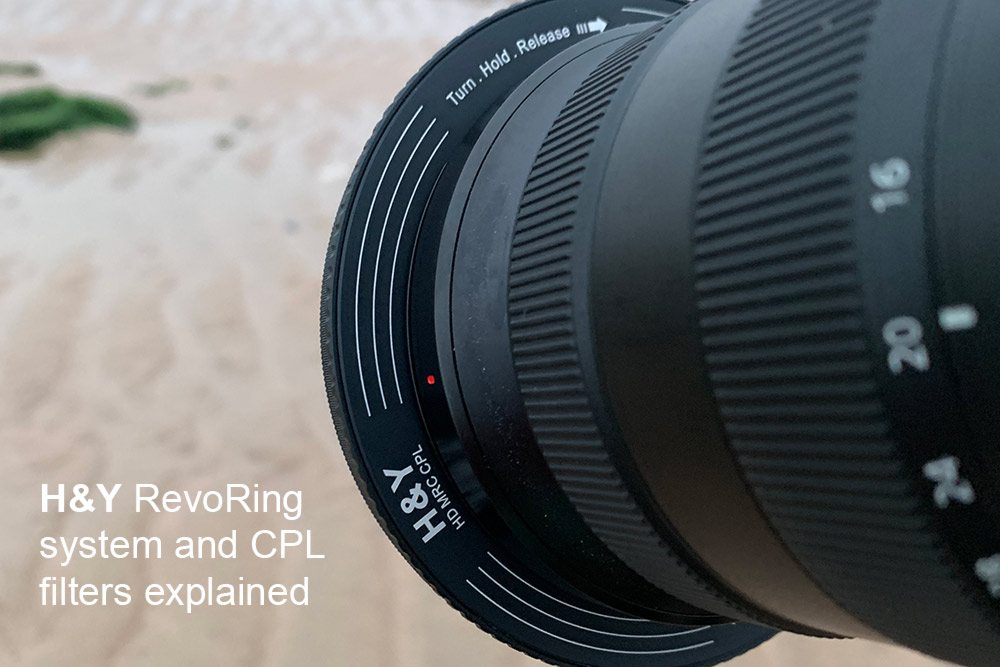
For anyone newer to photography, polarising filters can be confusing in part because they go by many names, but they also perform several different effects. Our H&Y RevoRing polarising filter review will help you to learn everything you need to know about this unique magnetic filter system, as well as demystify what a polarise filter does. We also take a sneak preview into what you can expect from H&Y filters in 2022 and reveal what’s in store for their outdoor RevoRing filter system.
What is the H&Y RevoRing Filter System?
The H&Y RevoRing Filter is a unique lens filter system, and the CPL features a self retracting blade with threaded ends to secure onto the front of a camera lens. There is no light leak and one filter can be attached to multiple lenses without needing step-up rings.
Each filter can be mounted to several filter thread sizes due to the built-in variable step ring, with the circular polariser available in 46-62mm, 58-77mm and 67-82mm. This results in time and cost savings due to a novel design, which takes up less space in your camera bag, can be quickly attached and fits several camera lenses.
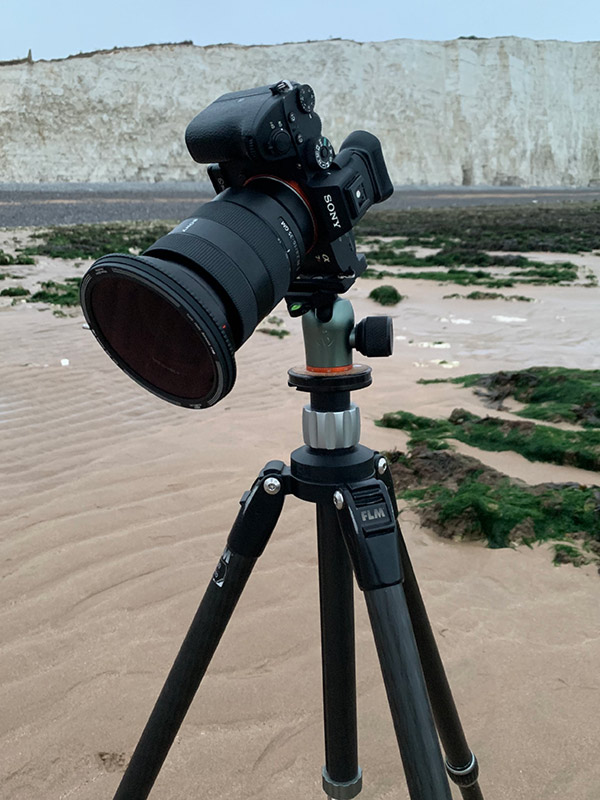
How do you use H&Y RevoRing Filter System?
To use the H&Y RevoRing filter system simply twist and the variable step ring retracting blades are exposed. Hold it to the front of the lens and it quickly attaches, then rotate the filter to lock, with no need to screw it into the filter thread.
Once the CPL Filter is attached you can use the convenient control pin to accurately twist the filter and apply the precise amount of polarisation to the scene. This is beneficial when deciding which amount of filtration looks best and reveals the perfect reduction in reflection for your needs.
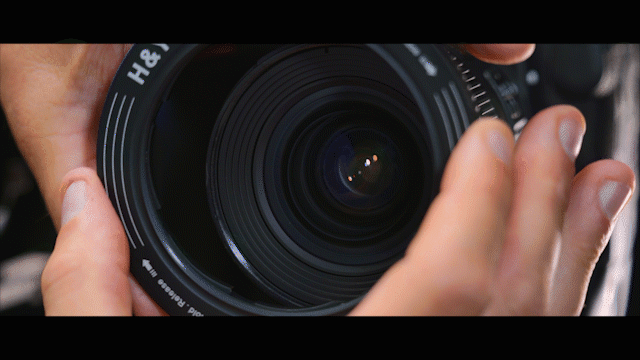
This animation shows how each RevoRing filter can be adjusted to fit various filter thread sizes, by simply squeezing and offering up to your lens.
What is a CPL Filter?
A CPL filter is simply an abbreviation for a circular polariser filter. A number of polarisation effects are made by rotating the filter. In certain situations a CPL filter will reduce reflections and reflected light, reduce glare from wet surfaces, enhance blue sky and increase contrast and saturation.
CPL filters are made with specially coated glass, which is German Schott Glass in the case of H&Y’s filters. Schott glass provides slightly higher light transmission, which means more light enters the lens than with other types of glass, countering one of the downsides of a CPL filter.
When do you need a circular polarising filter?
You need a circular polarising filter if you are an outdoor photographer, in particular if you capture city, architecture and landscape photography. A polarising filter reduces glare and reflected light, which in turn increases contrast and saturation. This effect is essential to enhance an image during particular conditions.
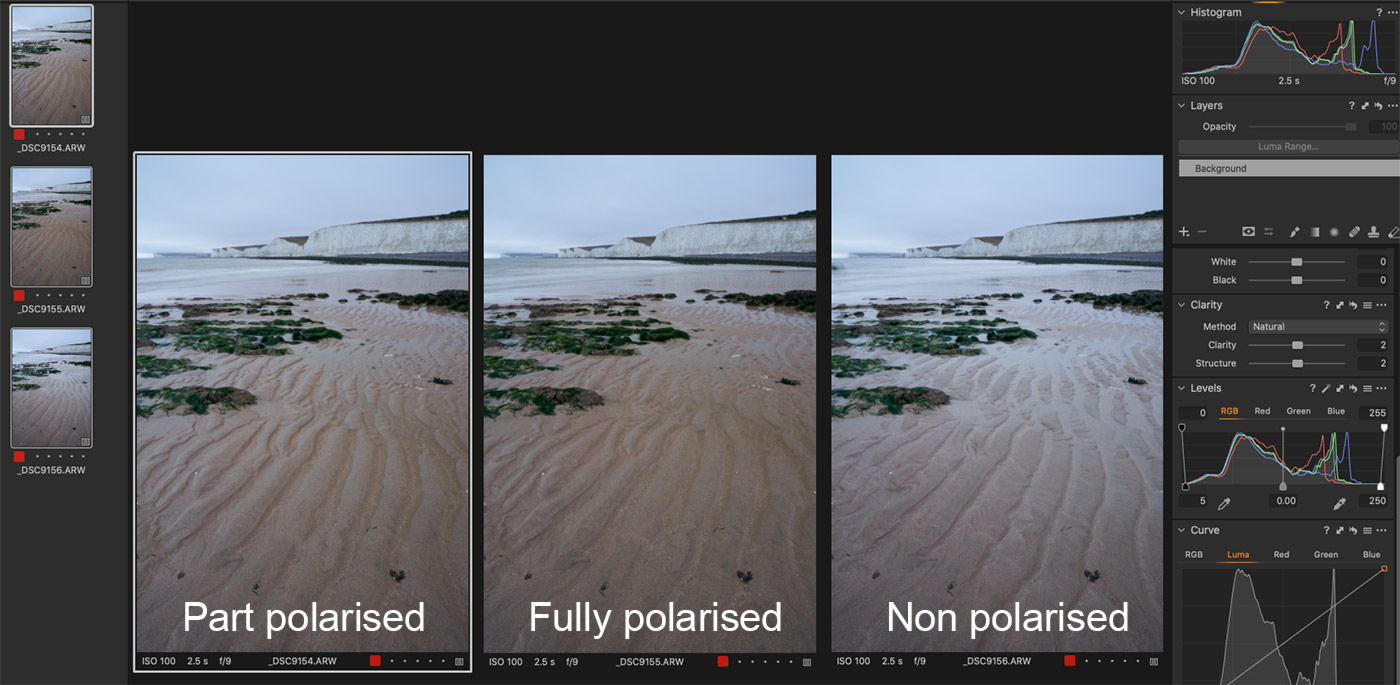
Three levels of polarisation were easy to achieve with the Sony FE 16-35mm F/2.8 GM lens and H&Ys largest RevoRing MRC CPL Filter 67-82mm. Rotating the filter provides different levels of polarisation, allowing you to choose the effect which works best for each image.
Should you use a polariser for landscape photography?
A polariser is essential for landscape photography with conditions often requiring the use of a polariser to enhance the image in a particular way. Try taking the same image with various levels of polarisation in order to see the effect and allow you to choose your favourite after the shoot.
Situations where a polariser are useful for landscape photography include when capturing any water such as rivers or the sea, as well as when surfaces are wet, such as wet rocks or foliage. Blue skies can also be enhanced if you shoot at around 90-degree angle to the sun when using a polariser.
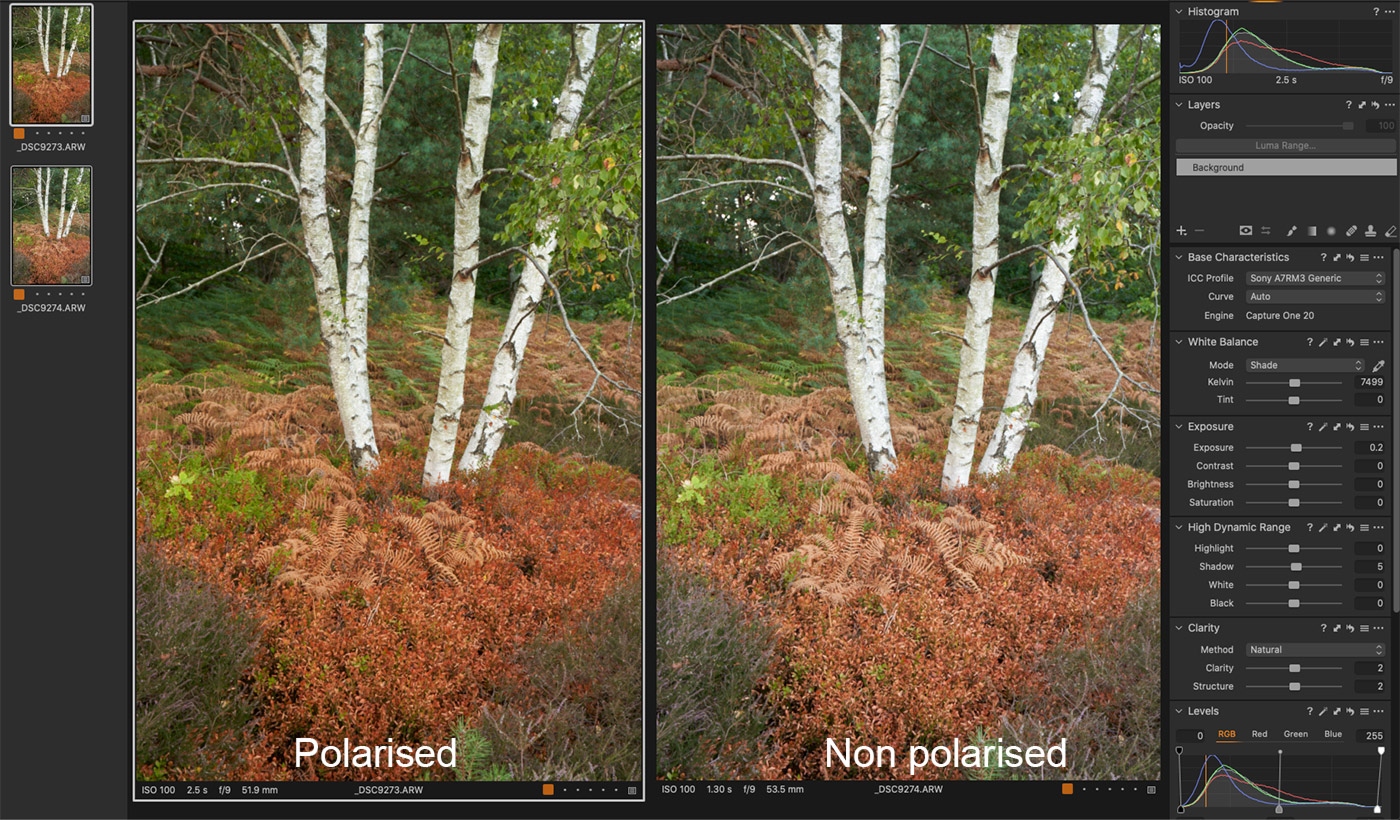
Once again using the RevoRing MRC CPL Filter 67-82mm, this time attached to the Sigma 24-70mm f/2.8 DG DN lens for Sony. This image demonstrates the higher contrast and saturation which the CPL achieved, regardless of the lack of directional light in the scene.
Do you really need a CPL filter?
A CPL filter is considered essential by many photographers as it can be difficult to replicate certain polarisation effects in post. By reducing glare and reflections you’ll reveal richer colours, higher contrast and even expose what lies beneath the surface of water.
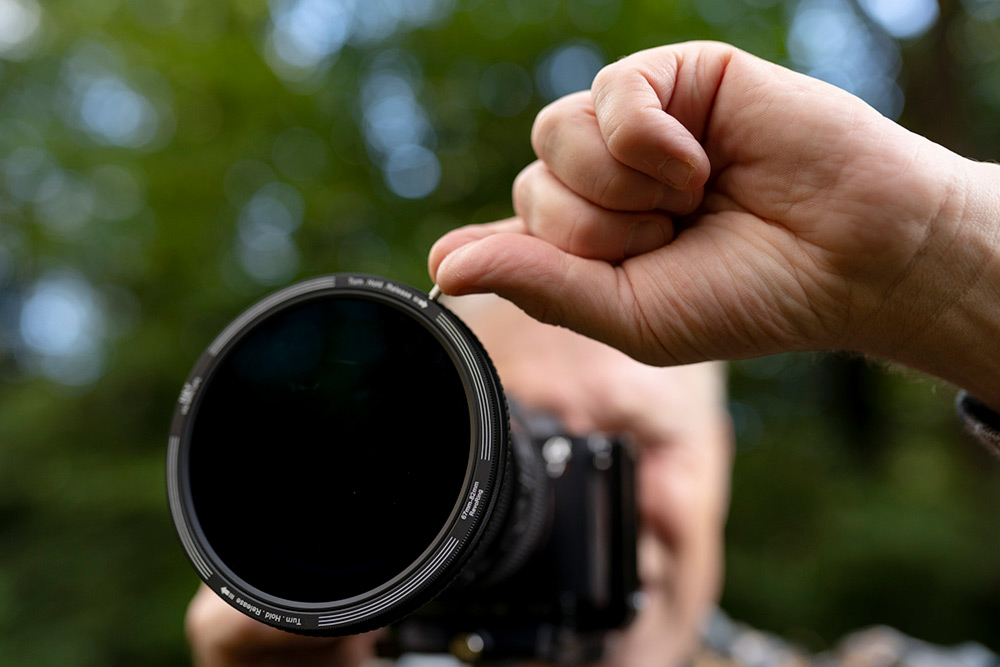
When not to use a polarising filter
There are situations when not to use a polarising filter, such as during low light when the shutter is slowed unnecessarily. If you are using an extremely wide angle lens you may notice uneven polarisation in the sky, and if there’s no effect when the filter is rotated, it can be removed.
Can you leave a CPL filter on all the time?
It is not recommended to leave a CPL filter on all the time. This is because you will notice a slight blueish colour cast in all of your images and you’ll be reducing the amount of light entering your lens, which slows the shutter unnecessarily when polarisation is not required.
Do polarisers work when it’s cloudy?
Polarisers do work when it’s cloudy and will reduce reflections and glare, whilst also enhancing contrast and saturation. However, a polariser will not be able to enhance grey skies, in the same way in which it can enhance blue skies.
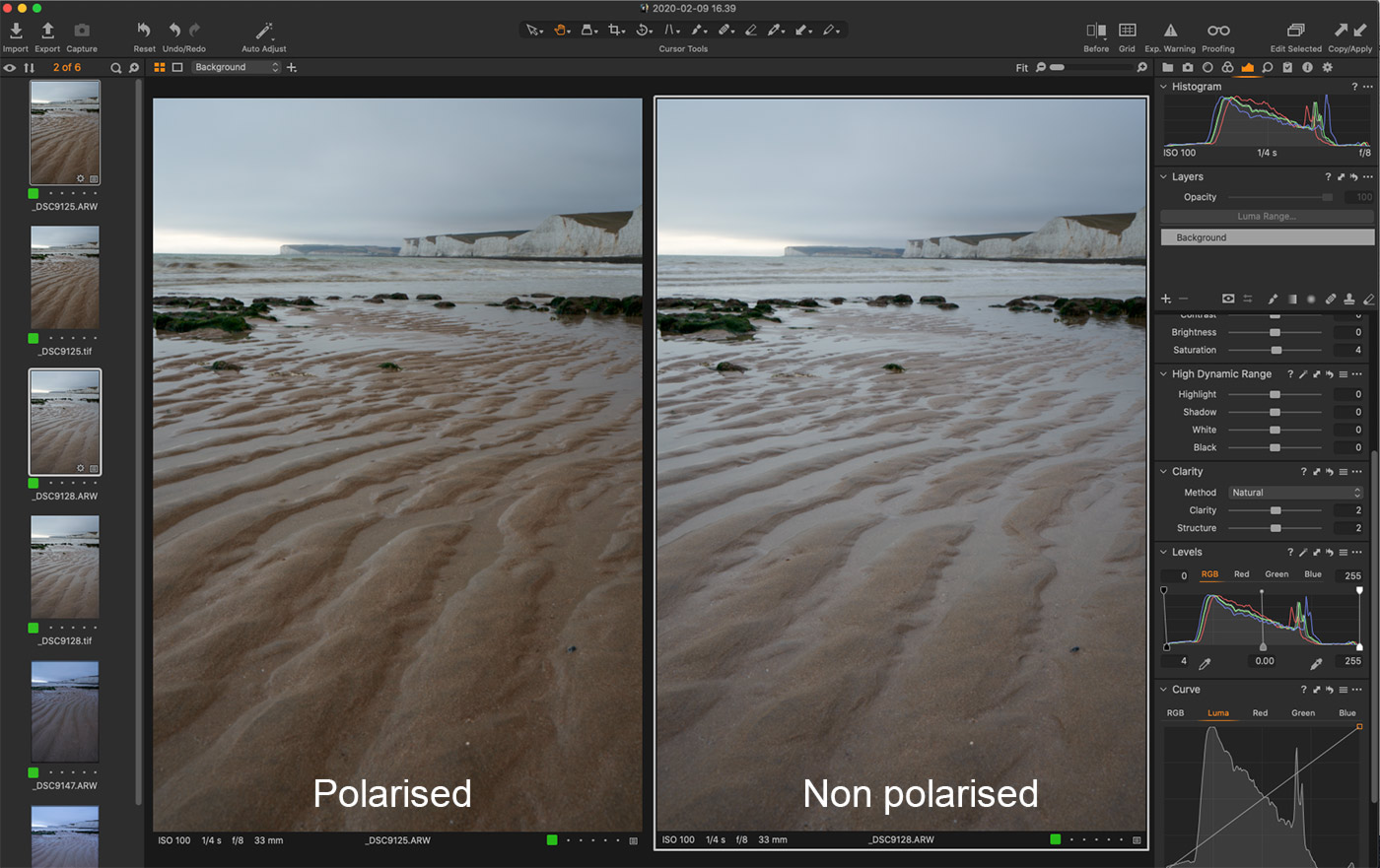
The RevoRing MRC CPL Filter 67-82mm works perfectly when it’s cloudy, although the effect is visible in the wet sand, rather than the sky. A CPL will reduce reflections, but cannot get rid of marine fog or clouds!
What is the difference between CPL and ND filters?
A CPL (circular polariser) is used to reduce the amount of reflected light, whereas ND filters reduce overall light. Polarising filters may enhance colour saturation and contrast, while ND filters simply reduce the amount of light entering the lens, without affecting these aspects of the image.
Both CPL and ND filters can be used simultaneously to reduce glare whilst also slowing the shutter. This could be when capturing a landscape photograph, or while recording a video during brighter conditions. These can be combined into one filter, such as with the two in-one H&Y Revoring 67-82mm VND (ND3-ND1000) and CPL Filter.
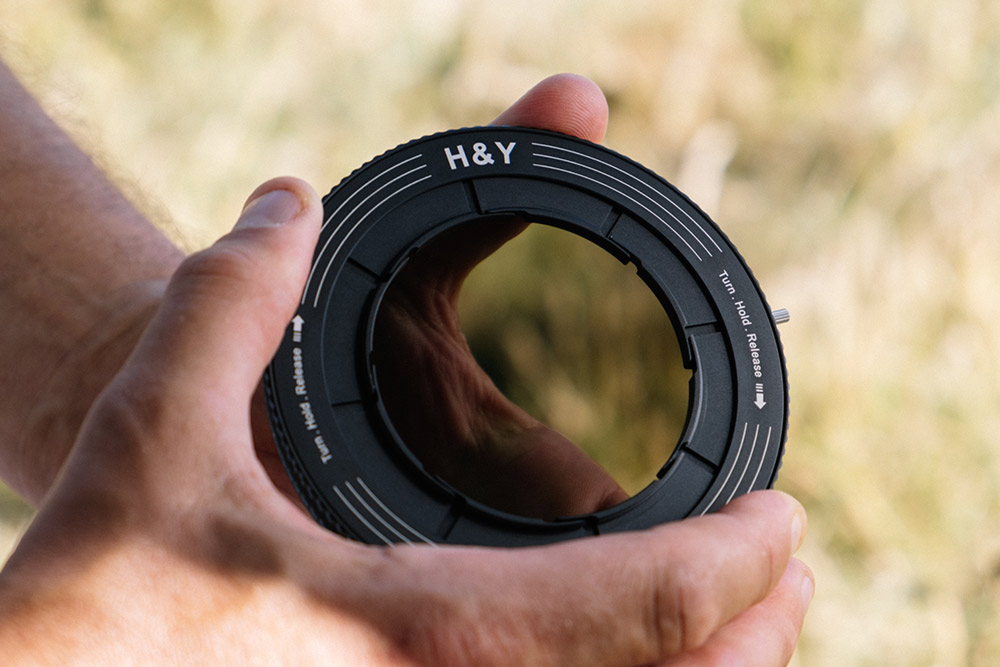
Built-in variable step ring
How does the H&Y RevoRing polarising filter perform?
In my experience the H&Y RevoRing polarising filter performed extremely well and was easy to mount onto each lens. Light transmission was high enough to accurately gauge the level of filter effect, while the high quality glass and control pin combined to make it incredibly easy to use.
The H&Y RevoRing Circular Polariser 67-82mm fits three of my most commonly used lenses, two of which have an 82mm thread while the third has an 77mm thread. This made it quicker and lighter to manage, with less lens adapters to carry and hunt around for.
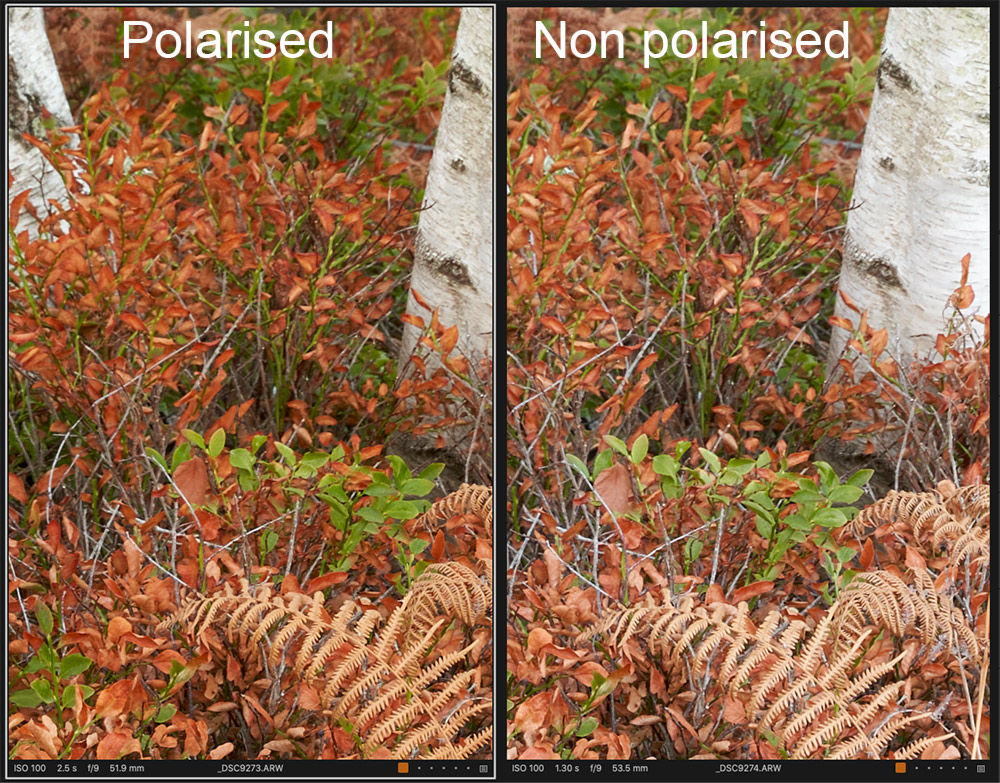
Close-up from earlier image showing just how much the CPL reduces reflections whilst increasing saturation, even in this dimly lit forest scene.
What didn’t I like about the H&Y RevoRing polarising filter?
Removing the RevoRing polarising filter will take some practice as sometimes the mechanism wouldn’t release quickly, although this will no doubt improve with experience. The only other thing I would like is to be able to use square graduated neutral density filters in order to balance the sky.
What filters are H&Y working on?
H&Y are working on the RevoRing Swift, which is an all-in-one magnetic video and photo filter system due for release autumn 2022. This will include a matte box and square filter holder, which addresses the ability to add graduated NDs mentioned earlier.
The H&Y RevoRing Filter system is a breeze to use, saving time and space with its built-in variable step ring, which fits each individual filter to multiple lenses. The H&Y circular polariser performed extremely well and allowed for accurate rotation with the control pin. As the ring was rotated the high quality glass made it easy to see precisely how filtration was affected and the results were impressive.
A CPL is essential for several types of outdoor photography and improve the image by adding contrast, saturation and by reducing glare and reflections. Browse for your CPL from H&Y filters today and explore a new level of photography which can be reached by using a polariser.
Share this post:
By Nick Dautlich on 10/08/2022
Nick Dautlich
Senior Content Writer and Product Reviewer
Nick Dautlich is the Senior Content Writer and Product Reviewer at Park Cameras, with over 15 years of photography experience. A Sony Imaging Professional and expert reviewer, Nick has worked with major brands such as Canon, Sony and Nikon. His work is also featured on Vanguard World UK’s website, Capture Landscapes, and Shutter Evolve. Nick’s photography includes National Trust projects and magazine covers and he is passionate about landscapes and storytelling. Nick also enjoys hiking and teaching his children about nature. Learn more on his profile page.

Trade in your old equipment
Fast and easy trade in service ensures your old gear is collected efficiently and you are paid quickly! It's very simple to trade in your unwanted photography gear. Just head over to our dedicated Sell or Part Exchange page, fill out the details, and we'll get back to you with an offer for your old gear. Take the cash, or put it towards the cost of your new gear. It's up to you! Find out more
sign up to the newsletter
Keep up to date on the latest photography news, events and offers. Sign up now
